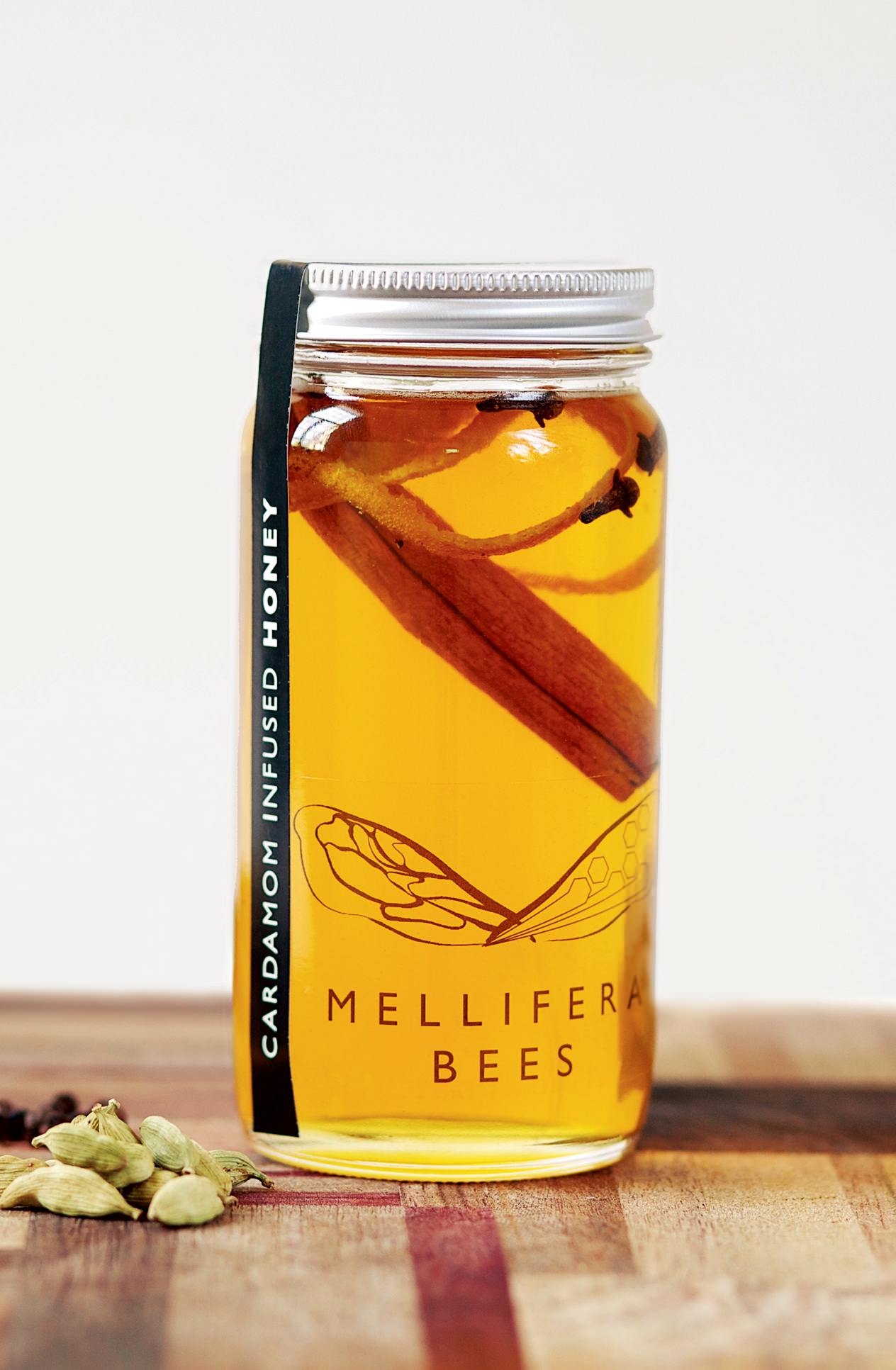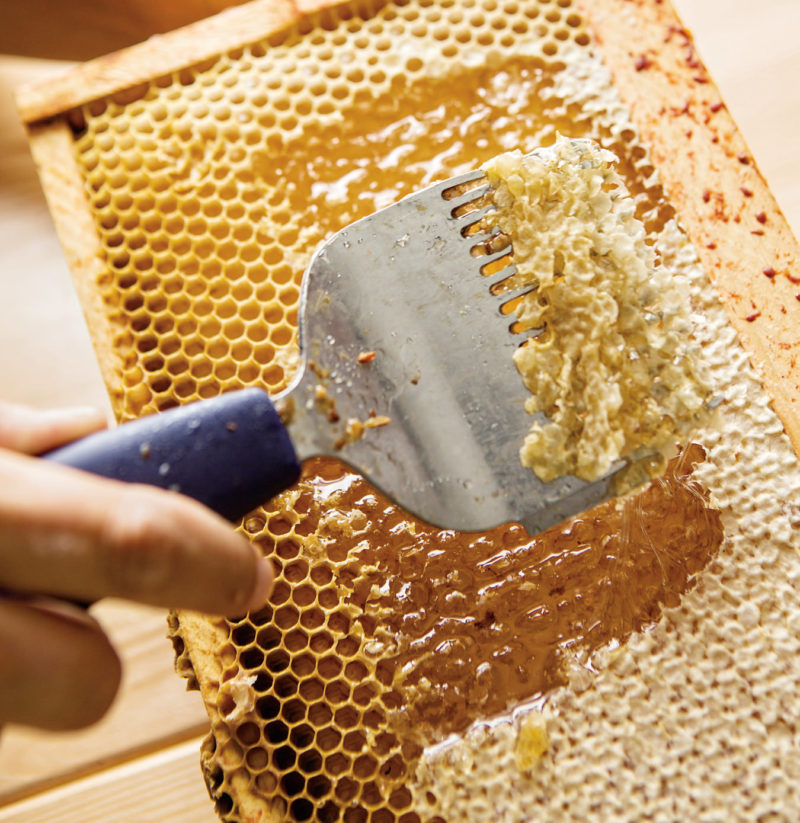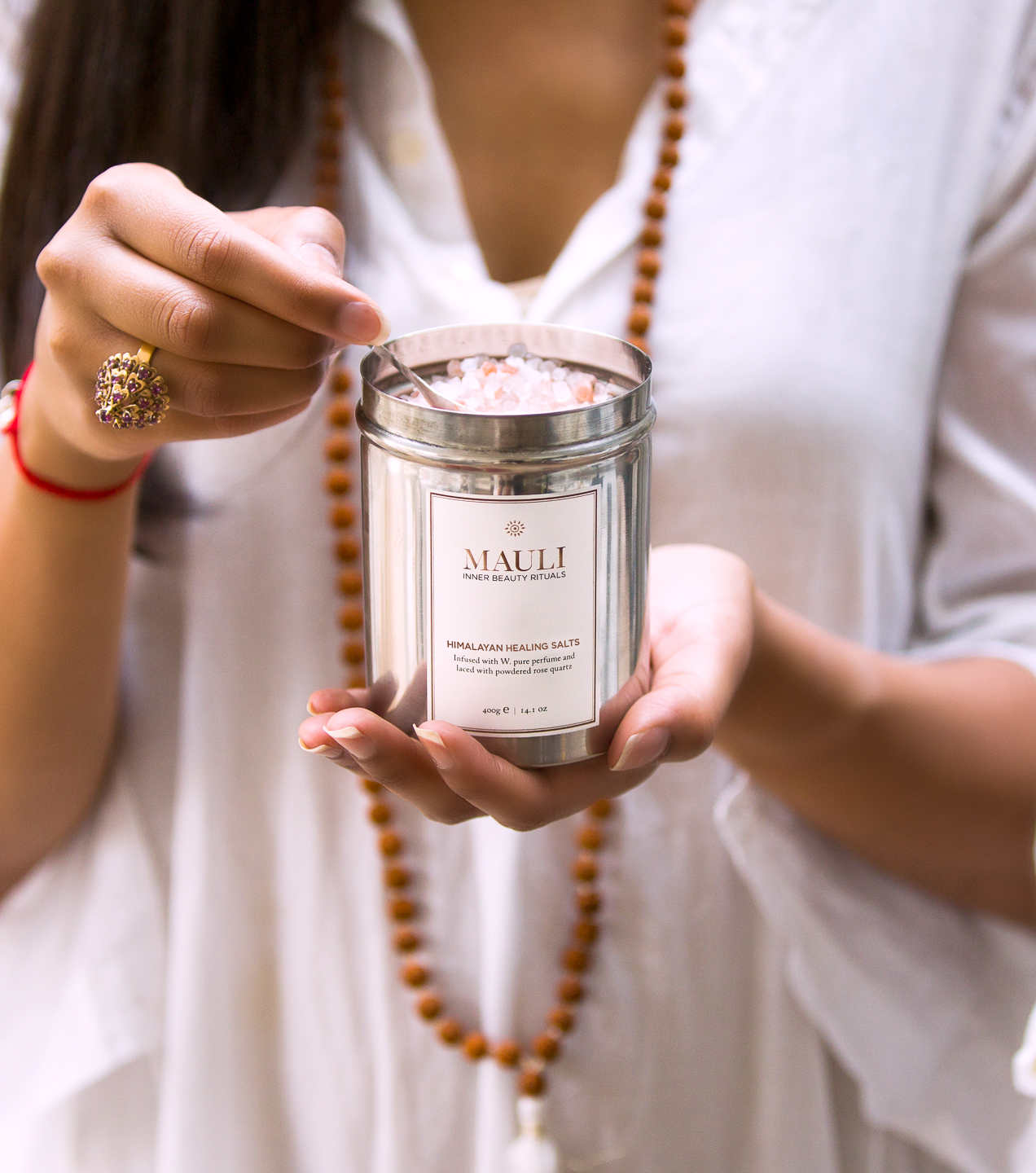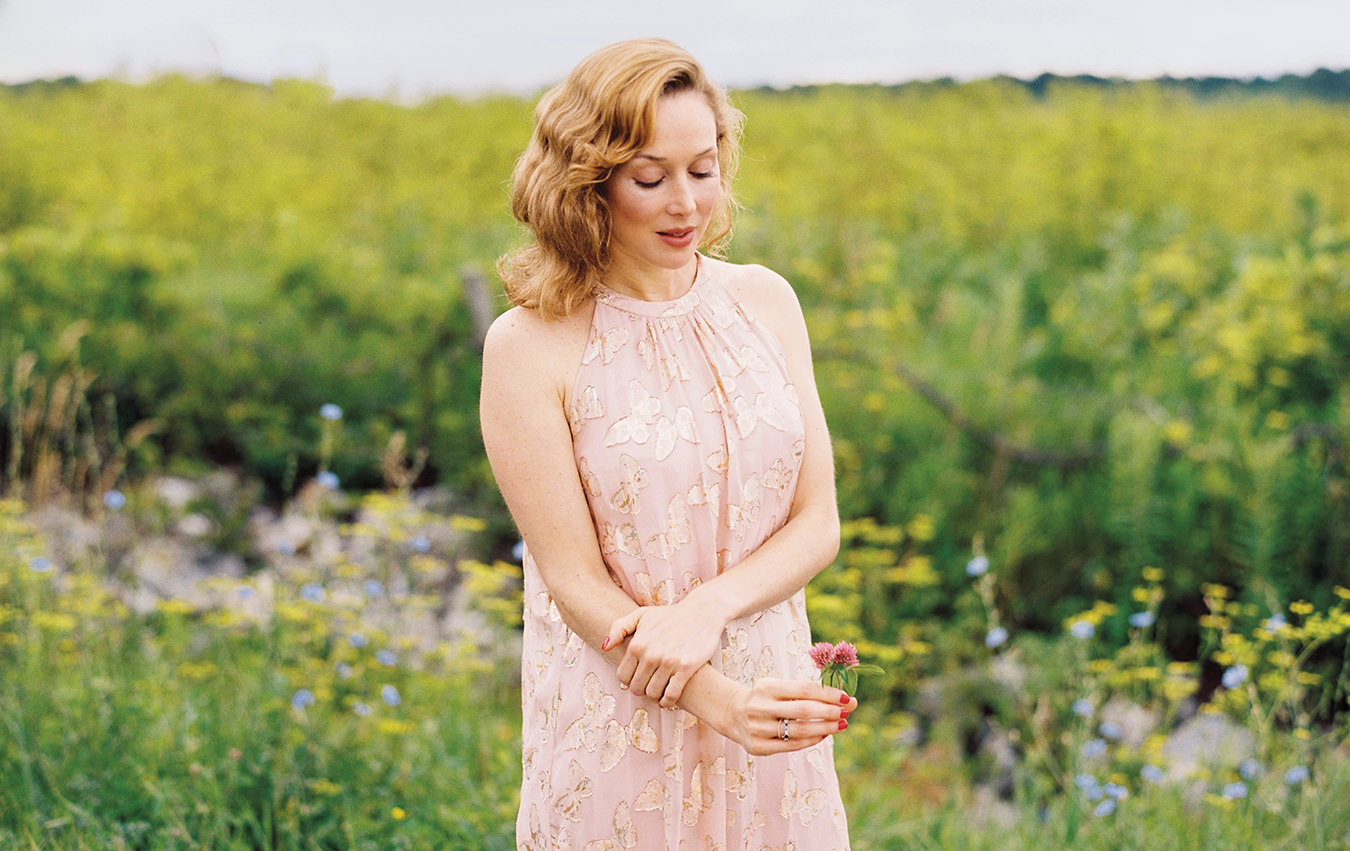Honey Is the Ambrosia of Skin Care
Liquid gold.
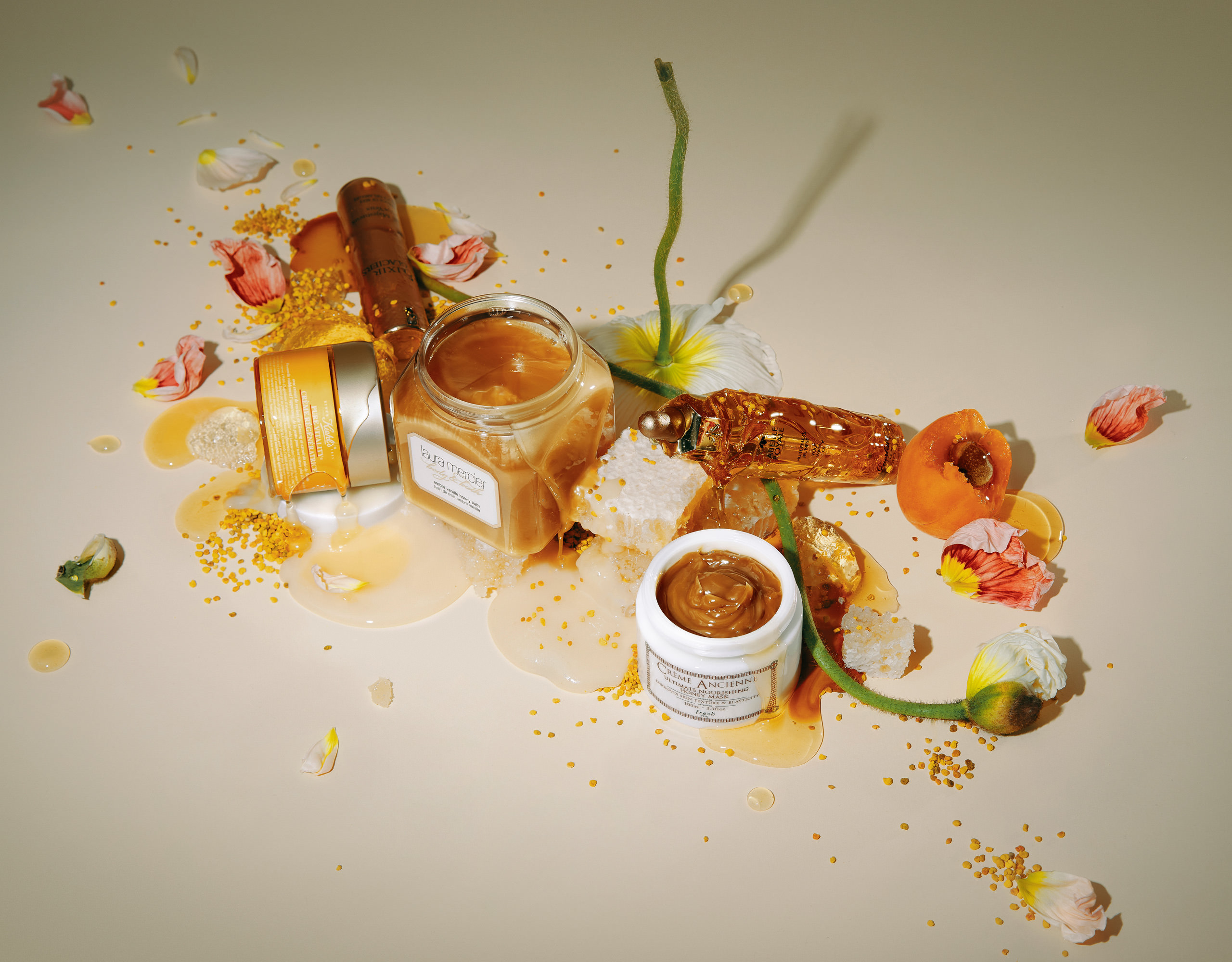
There are universally accepted truths about bees: They are humble, each one assuming a role and performing it for the success of the hive; they are romantic, communicating through dance and adopting the flavours and emotions of their environments; and they are integral to the life cycle of plants and flowers, pollinating them so they may bear fruit. But perhaps the best known is that, as nature’s alchemists, they are something akin to magic, producing a sweet, nourishing, and healing potion: honey.
Honey’s reputation for healing began in the ancient world. Physicians used it in skin grafts, wound treatments, and ointments, observing the repairing, anti-inflammatory, and antibacterial effects when applied topically. We know now that this balm-like effect occurs because honey triggers our body’s repair signals and protects the epidermis while simultaneously repairing fibres, replicating the way our body would naturally react to a wound or burn. The understanding of this bodily interaction caused by high levels of amino acids, fructose, and antioxidants makes honey the skin-care industry’s most powerful naturally occurring weapon, one that is being increasingly capitalized on each year. The humble bee is at the centre of a growing farm-to-face movement in the beauty industry that is harnessing the repair signal to heal wrinkle breakage and slow the breakup of cells that occurs as we age. It feels contemporary but is, in fact, a return to a way of approaching skin care that began centuries ago.
Skin-care brands are combining an old-world understanding of natural ingredients like honey with rapidly advancing research to create highly effective products. For instance, Fresh’s Crème Ancienne Ultimate Nourishing Honey Mask has the look and feel of buttery soft caramel and is made by monks in the Czech countryside from an adaptation of a 2,000-year-old recipe. The product, as the name implies, is honey dominant, and the added meadowfoam seed oil, substituted for the original almond oil, helps it to decadently melt onto the skin. The honey is intended to improve skin’s elasticity, but when the formula was first used by Greek physician Claudius Galen, it was a treatment for gladiators’ wounds.
Many luxury beauty brands have heritage roots, and honey has become something of a heritage ingredient. One such brand is the House of Guerlain, which has been indelibly linked to the honey bee since it first appeared on their perfume bottle designed for Joséphine Bonaparte in 1853. Since then, Guerlain’s love for the bee has only grown and they have positioned themselves at the forefront of bee conservation, innovation, and research in the beauty industry. The company cultivates black bee colonies that are native to Ouessant, an island off the coast of Brittany, and one of the few species that hasn’t been polluted by the stressors of the Continent. Guerlain takes a quality-over-quantity approach to their honey-based products, making small batches of products from the honey and royal jelly—one of the rarest forms of bee products—harvested once or twice a year.
The royal jelly contains the carbohydrates, proteins, lipids, and vitamins that nourish and encourage the production of better, healthier cells. Their Abeille Royale Youth Watery Oil is made with Ouessant honey, royal jelly, and myrrh oil (derived from 3,000-year-old traditional Indian medicine practices), which plumps the skin and gives it a replenished glow. The most effective honey-based skin-care products use both honey and royal jelly, but other ingredients like echinacea, shea butter, and ginseng are sometimes added for extra brightening. Valmont’s Sérum Majestueux Vos Yeux contains propolis, which is a resin made from poplar and cone-bearing trees that bees use to build their hives, but when included in skin care can reduce swelling and inflammation. Kiehl’s Pure Vitality Skin Renewing Cream uses red ginseng root and manuka honey, named for the New Zealand manuka plant that creates more potent antibacterial honey.
The magic of honey is tied to the terroir. Similar to wine grapes, the regional flowers bees feed from dictate the colour, flavour, and benefits of the honey. People who have come to realize this are going so far as to wash their faces with raw manuka honey or applying avocado honey to their body like a moisturizer—the Laura Mercier Crème Brûlée Honey Bath leaves the whole body feeling supple and detoxified.
Bees are not naturally able to work year round. Honey making is a seasonal process, and if forced to work all year long or collect from flowers that have been sprayed with pesticides, the gentle insects’ cortisol levels will spike. Any pollution or outside stressors can affect the purity of their honey, and in turn, the beneficial interactions are interrupted, too.
A beehive typically produces around 60 pounds of honey each year, with the intention that it will see them through the winter, but experts believe a colony needs 20 to 30 pounds of honey to survive a winter. While this justification is widely contested, the food and beauty industries use the figure to measure how sustainable their practices are. The demand for honey-based products continues to increase, while the bee population shrank more than 40 per cent from 2018 to 2019.
As the scales tip, and the call for bee protection and conservation is heard throughout the world, it is the responsibility of beauty consumers to do their part. If we are going to harvest the benefits of bees’ hard work, we owe it to them to keep them as happy, healthy, and protected as possible—our little sentinels of beauty. 
_________
Never miss a story. Sign up for NUVO’s weekly newsletter, here.

